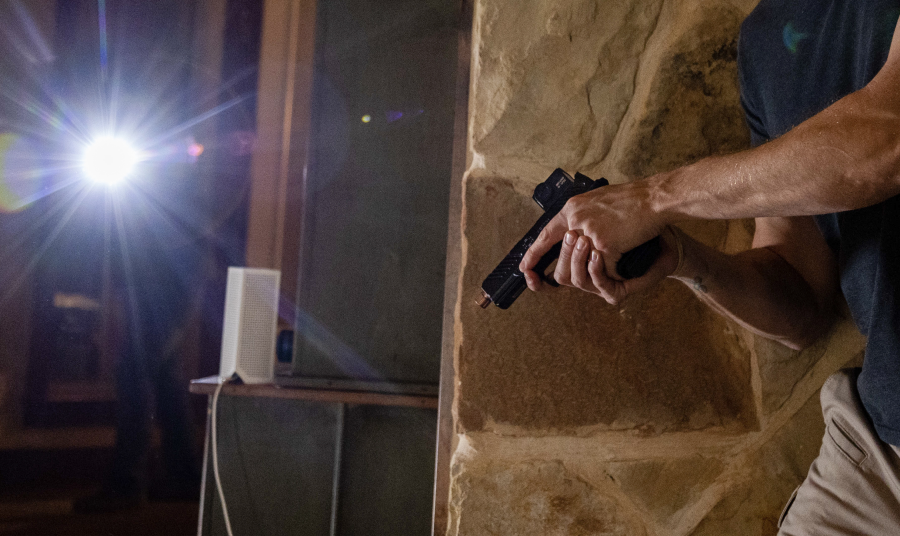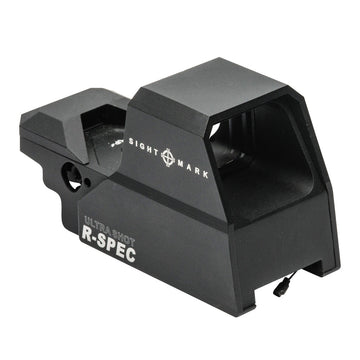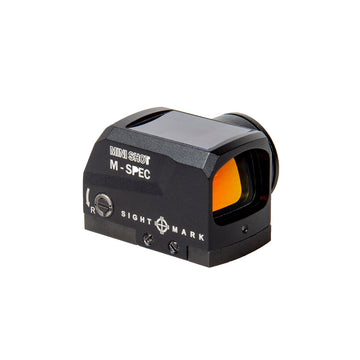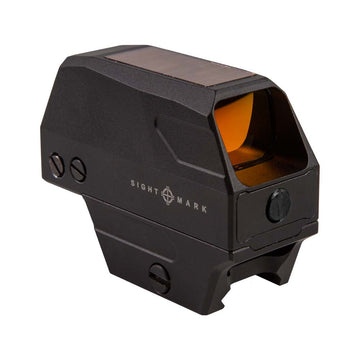Imagine this:
You’re sound asleep in your bed, dreaming about how you’re going to bring your brand new shake awake optic back to the range tomorrow. Earlier this afternoon, you mounted it on your EDC pistol and had it zeroed at 25 yards. Every round you fired hit dead center with your new red dot’s reticle. As far as you’re concerned, it’s a great investment. Not only is it deadly accurate but you’ll be saving your battery power with your new shake awake sight. In fact, before you turned off the lights and went to sleep, you gave it a goodnight kiss before turning it off and mounting it on your bedside rack.
The sound of a vase crashing onto your downstairs living room floor rouses you from your sleep. You don’t have a cat. Still drowsy, you reach for your bedside pistol and rack the slide.
You hear footsteps coming up the stairs and stand in the corner of the room closest to the door, you hold your weapon at the low ready, psyching yourself up to ambush whatever comes through the door. Your head is throbbing, your heart is pounding through your chest.
The door swings open and a figure in a dark hoodie bursts through your door. You have the drop on him. You raise your weapon– the dot isn’t there. For a split second, you remember that you manually turned off your red dot, rendering the shake awake useless. Before you know it, it’s game over.
Limitations and Pitfalls of Shake Awake Red Dot Sights
Complacency is one of the problems with shake awake optics. Most modern variants with this system require that they be left on to naturally “go to sleep” after a period of motionlessness, and some new shake awake users forget that the power button is there for a reason. These people make the dangerous assumption that the optic will wake up every time they pick up their weapon. Even if a user follows the manufacturer’s instructions to the letter, the complexity of the shake awake system is just another thing that can go wrong. The shake awake can also activate on a bumpy road or if you walk down the street with your weapon in your holster, so for EDC situations, there’s little difference between it and a traditional always-on red dot.
Why Always-On Red Dots Make Sense for Everyday Carry
A shooter serious about self defense knows that every second he spends fiddling with components is another second he’s wasting on not reacting to the threat. A good optic should be grab-and-go, and the simplicity and long battery life of always-on optic will ensure that your optic will be ready when you are.
Battery Life and Practical Use: How Long Will an Always-On Red Dot Last?
Shooters looking for a red dot will invariably be concerned about their optic’s battery life. Some skeptical users might judge a red dot billed as having 500 – 100,000 hours of battery life to only be reliable for a week. This would be an accurate assumption if they always kept their red dots on their highest power.
A high-intensity red dot in a dark room becomes hard to aim because of the reticle’s “splash.” A red dot on lower settings not only uses less battery power but also provides a clearer reticle. Those with astigmatism or poor eyesight may complain of blooming or split reticles on their red dot optics, but on low power the dot becomes a clear and well-defined circle.
A shooter can turn his weapon’s red dot on, adjust it to a lower setting, and leave it ready to go in his car on by his bedside for a year or more. This is especially true if the optic in question is a Mini Shot M-Spec Solar. It combines a CR1620 battery with its integrated solar panels to get 20,000 continuous hours of battery life on middle brightness. A shooter is more likely to spend more on gun oil than he would changing out his optic’s $1 battery every two years. Even in optics without solar power, the Sightmark Wolverine has a battery life of one million hours on low. In 114 years, this optic may still have battery power even after the soul of its owner has long departed the earth.
Adaptive Reticles and Smart Power: The Best of Both Worlds?
Having an always-on red dot becomes one less thing to fumble with when you have to engage targets at a moment’s notice. If battery consumption is still an issue, Sightmark’s red dots with adaptive reticles such as the Mini Shot A-Spec M3 Micro as well as the M-Spec M2 and M3 Solar models intensify or lower the brightness of their reticles based on exterior lighting. This means its high settings will only be used on the brightest of days while in the majority of cases, shooters will be using medium and low power reticles, which use less energy and provide optimal sight pictures.
Which Is Better for You: Always-On or Shake Awake? Which camp do you support? Always-on or shake awake? Tell us in the comments below.
Frequently Asked Questions
What is a shake awake red dot sight?
Shake awake red dots automatically enter sleep mode when motionless and power back on with movement. This helps conserve battery life while keeping the optic ready for use—if left turned on.
Can I turn off a shake awake red dot manually?
Yes. Most shake awake optics include a manual power button. However, turning it off disables the shake awake feature, meaning the optic won’t activate unless manually powered back on.
What are the risks of relying solely on shake awake features?
Forgetting to leave the optic powered on renders the shake awake function useless. In critical moments, this could delay target acquisition or leave you without a reticle when you need it most.
Why are always-on red dots recommended for everyday carry?
Always-on red dots eliminate the need to activate the optic before use. With long-lasting batteries, they offer immediate readiness—vital in high-stress self-defense situations where every second counts.
How long can an always-on red dot run before replacing the battery?
Depending on brightness settings and power source, always-on red dots like the Sightmark Mini Shot M-Spec Solar can last up to 20,000 hours, while models like the Wolverine can exceed one million hours on low power.
Does using a lower brightness setting really extend battery life?
Yes. Lower brightness settings drastically reduce power consumption. They also reduce reticle bloom and improve clarity, especially for users with astigmatism or vision impairments.
What are adaptive reticles?
Adaptive reticles adjust brightness based on ambient light. In bright conditions, the reticle brightens, and in dim settings, it dims automatically—balancing visibility with efficient battery usage.
Is solar power reliable in red dot optics?
Yes. Solar-assisted red dots like the M-Spec M2 Solar supplement battery life by drawing power from ambient light, increasing runtime without user input—even indoors under artificial lighting.








2 comments
We’re really glad to hear you’re loving your Mini! We appreciate the feedback, and you’re not alone—Bluetooth connectivity is something a lot of folks have been asking about. While we can’t share specifics just yet, we do have some exciting things in the works. Stay tuned!
Do you plan on putting Bluetooth on the next thermal i have the mini and love it no problems at all very good image very accurate but would like to be able to Bluetooth to my phone